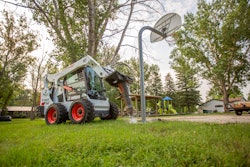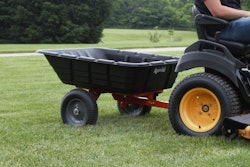 Photo: Pexels
Photo: PexelsDuring the winter, it can be tempting to want to stay indoors until springtime returns. However, customers should be reminded of the importance of winter watering during this chilly season.
While water usage in broadleaf trees drops during this season, it never completely stops and evergreen trees transpire more water in the winter, making them more prone to winter drying.
Just like how your skin dries out during the low-humidity conditions of winter, plant roots also run the risk of drying out. The damage happens most often during warm, dry windy days and the side of the tree facing the wind faces the most damage.
Even when it does snow, it takes an average of 10 inches of snow to equal one inch of rain. Newly planted shrubs, trees younger than five years, and certain herbaceous perennials are particularly in need of winter watering. Windy locations will require more watering as plant material dries out faster.
Woody plants with shallow root systems such as dogwoods, willows, European white, and paper birches are sensitive to drought injury and require supplemental watering during extended dry periods. Newly established lawns are also susceptible to winter damage.
Provide the following guidelines to homeowners who want to know about winter watering.
Only water when the temperatures are above 40 degrees Fahrenheit. Apply the water during the middle of the day to allow the water to soak in before the temperatures drop below freezing.
Timberline Landscaping, based in Colorado Springs, Colorado, advises cycling and soaking where the water is turned on for a period of time and then turned off to allow the moisture to soak into the soil.
“This lessens waste water due to run-off and is especially important when the ground is frozen,” Timberline Landscaping says.
The soil should be soaked to a depth of at least 6 to 8 inches. According to the Colorado State University State Extension, newly planted shrubs should receive 5 gallons of water two times per month. Small established shrubs (those under 3 feet tall) need 5 gallons monthly while large established shrubs (more than 6 tall) require 18 gallons a month during dry winters.
As for how often the landscape should be watered, it depends on the type of plants, soil, and weather but a soaking every two or four weeks should be enough. If they are uncertain if the soil needs more water, tell them to use a moisture meter or screwdriver to probe the soil. If it is dry, soak it with the aforementioned guidelines.
When it comes to the method of watering, it depends on where they are located if automatic sprinklers should be used. Advise your customer to check with their system contractor first if you don’t handle the irrigation side of things.
If the system has already been winterized for the season, then it should not be turned back on and the plants should be watered with a soaking hose or a sprinkler. Caution the homeowner to remove the hose from the faucet to drain completely after the water has been applied to prevent damage from freezing temperatures.











